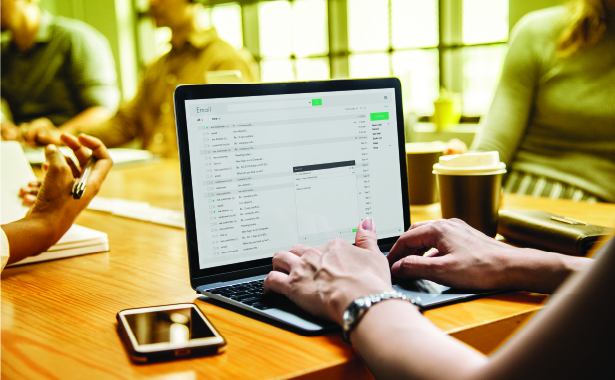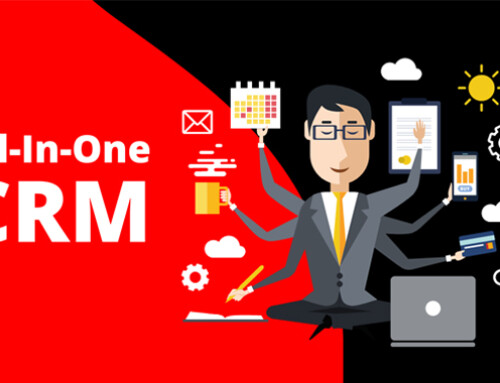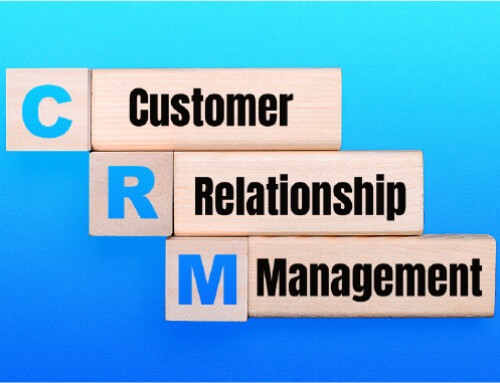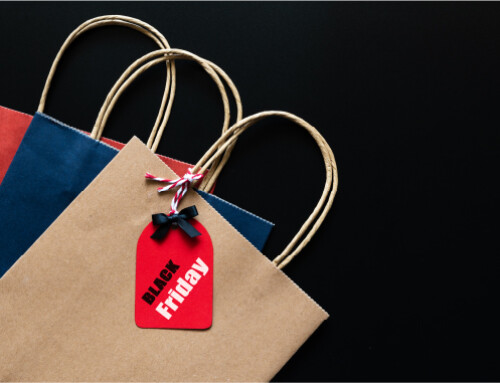Contents
Online or in-person, appointments are essential to your business — and of course you know this. They’re where deals are made and leads converted, especially if you’re a contractor or own a service-based business. So, it makes sense for scheduling to be the center of a lot of attention from both the pros and the entrepreneurs breaking into the business scene. From sales tools and CRM platforms with integrated scheduling management to all sorts of standalone appointment apps, you have more than a few options to set up your appointments. There is also the crucial meeting schedule confirmation email to think about, which means creating the best email using the best tools. Naturally, some are more straightforward and efficient than others, but I’ll leave that discussion to the later sections.
What receives less attention than tools for making appointment confirmation emails, however, is the way you should handle communications about that appointment. Even the best booking and appointment apps cannot actually reassure clients about their meeting and how it will go. That’s why the importance of communication cannot be overstated. That personalized email that puts customers at ease will go a long way in reducing no-shows and cancelations. A lot of times, the customers making the booking like to receive confirmation that somebody is, in fact, in the loop about the meeting and that it will take place. So, a reassuring email confirming the appointment can go a long way to improve customer relations, increasing conversion rates as well as loyalty.
What is an Appointment Confirmation Email
An appointment confirmation email is precisely what it sounds like: an email telling people who’ve scheduled an appointment with you that you’re going to be in that meeting. Now, there are different reasons why an appointment confirmation email is a good idea. I mean, the same thing can be achieved by a phone call or a text message. But as data has shown, email is the best, most professional way of delivering notifications, confirmations, and communications with leads and customers. So, to improve your scheduling efficiency, email is your best shot. But when do you need to send confirmation emails? Well, that actually comes down to how the appointment has been made. We’ll conver more answers to this question later on in this guide. Depending on how your business handles scheduling and meetings, you’ll be using one or both of the following methods.
Creating an Appointment Manually
If you’re not yet using a sales and marketing solution with automated booking features like RunSensible, this will be your primary means of scheduling meetings. In this method, the assumption is you’ve been communicating with the customer (or lead) in some way (email, messages, phone, etc.), and you’ve settled on a date and time to meet. That’s called a manual appointment, meaning you actually need to set everything up on your calendar yourself. So, with manual appointments, you need to write an email to that customer to make the scheduling official. That means you’ll need to send a meeting schedule confirmation email. It’s going to function both as a notification and confirmation, and if done right, it can improve your customer relations. It’s crucial to keep this type of appointment confirmation clear and concise, letting the customer know who you are and what the email is about as quickly and efficiently as possible. Naturally, this is not the only point you need to consider — the next section provides more best practices you should follow for better results. Plus, you can find some examples of this in the templates I’ve included further down the page.
Enabling Users to Make an Appointment
As a complete CRM, sales, and marketing tool, RunSensible lets you create convenient, easy-to-use booking calendars people can use to schedule meetings with you. All you have to do is to enter the days and times you’re available for meetings and put the automatically generated calendar on your website. RunSensible even allows you to set specific conditions for finalizing a meeting. Imagine, for example, a hairstylist — they want people to book a session, but they also want to get rid of all the hassle of negotiating and handling payment. With RunSensible, they can automatically issue an invoice for the session and confirm a booking only when that invoice is paid and processed.
When it comes to this kind of appointment, a confirmation email is much more critical. The customer is basically dealing with an automated calendar on a website. Without a confirmation email, there is no reassurance that you’ve been notified of the meeting they’ve requested and that you’re okay to go ahead with it. Personally, I’m much more likely to trust a business with a human presence than one that seems efficient but entirely automated. So, when the convenience of online booking is combined with that human touch of a customized email, you get the best of both worlds — fast conversion and happy customers.
Appointment Confirmation Email Best Practices
Here are some of the vital rules to keep in mind when creating your appointment confirmation email. Of course, there are other crucial best practices you should consider as well. Take a look at this list of email writing best practices for some of the more important ones.
Keep it Short & Relevant
These are words to live by, at least when writing business emails. Sure, everyone likes to have a nice, relaxed conversation, but an email is just a one-sided communication tool, and it’s not like you’re best friends with your customers. So, instead of spending sentences on pleasantries, tell your recipient why you’re writing the email and the details of the appointment.
Long and complex confirmation letters will not result in a warm and friendly relationship with your customers. Trust us on this. Such emails only make your customers angry for wasting their time. Just make it short and to the point and make sure you have included all the necessary details of the appointment.
The Subject Line is Crucial
I can’t stress enough how vital the subject line is. I’m speaking, of course, about the short phrase or sentence you put as the “subject” of your email. It’s the recipient’s major signal in whether or not they need to open that email. If you think they’ll definitely open an appointment confirmation email because they made the appointment themselves, well, I wish it were that simple. When it comes to most people, you’re probably right: they’ll remember your name or your company’s name. But sometimes you may be dealing with really busy people, or you may even be communicating with another company (B2B). That means you cannot take anything for granted. So, make sure the subject line mentions what appointment it’s confirming.
The word or short phrase you chose as the “subject” of your email plays a very important part in achieving your objective of appointment confirmation. The most simple details are always the easiest to mess up. If you don’t pick the right words, your customer may never open the email. So, make sure you include the name of your company as well as the word “appointment” or “meeting” in the subject line.
This Isn’t about Marketing (Well, Maybe Just a Little)
If you’re doing a lot of email marketing (if you’re not, read our guide on opt-in email marketing right now), you may be tempted to stuff this confirmation email with lots of brand-specific design and perhaps even some marketing content. Don’t! Or do it right. It’s true — transactional emails are a great opportunity for marketing because of their higher open rates. However, you don’t want to confuse and turn off the recipient. So, if you decide to include some content, make sure to keep it to a tasteful minimum and position it after the body of the email.
In writing confirmation emails, some people make the mistake of overdoing it by adding unnecessary brand-specific designs or worse yet, marketing content. A confirmation email should only do what its name suggests. Confirm. There’ll be plenty of opportunities for marketing and improving brand awareness. But if you still insist, at least place it AFTER the confirmation section and make it as concise as can be.
Why You Should Send Meeting Schedule Confirmation Emails
Prevents No-shows
A no-show is when someone does not attend an appointment or meeting or cancels at the last minute. No-shows can cost businesses a lot of money, but they can be easily avoided by sending confirmation messages to your customers beforehand.
Shows Off Your Professionalism
Confirmation emails or texts help your business look professional and well-organized. This gives an impression of the quality of service you offer and helps you stand out from competitors.
Improves Customer Service
An appointment confirmation email gives your clients enough time to adjust their schedules. This small courtesy will improve your customer service and show that you’re dedicated to providing the best possible experience for your clients.
Increases Bookings
With confirmation emails, customers can cancel or reschedule, giving you more time to book a new job or update clients on waiting lists.
How Should an Email Appointment Confirmation Message be Structured?
An email appointment confirmation message has four parts.
The Sender’s Name
- This is the first thing the customer will see.
- You could use your business email address but that may be unfamiliar to the customer and result in the email being overlooked.
- Say something like, “Dr. Han from The Mayo Clinic” instead.
The Subject Line
- The email subject is directly underneath the customer’s name so it’s the second thing the customer will notice.
- Get to the point by saying something like, “Confirming your appointment on [date and time]”.
The Preview Text
- The preview text is the first two sentences that appear underneath the subject line. It’s often used as a way to further encourage the customer to open the email.
- Most email marketing tools will allow you to write your own preview text, others just use the first two sentences within the body of the email.
- Write something warm and inviting. The customer may already be nervous about the appointment so this is your opportunity to help ease those fears.
The Content
- This is the meat of the matter.
- This is where you’ll provide details about the service the client paid for, the amount paid, and when and where the appointment will take place. If it’s a virtual appointment, provide the meeting link.
- Use the email to provide tips the customer can use to prepare for the appointment.
- Include links to any documents or contracts the customer needs to sign.
- Express that appointment reminders will be sent. You don’t have to say when, but make the customer aware that they’ll be sent.
- Include a CTA to confirm the accuracy of the details, as well as the option to cancel or reschedule and relevant contact information for your healthcare practice.
Mistakes to Avoid When Creating and Sending Meeting Schedule Confirmation Emails
- Asking for sensitive information. customers should be discouraged from sharing sensitive information via email.
- Sending emails to multiple recipients. You run the risk of customers seeing other customers’ email addresses. Also, you won’t be sending a personalized message.
- Forgetting to double-check the recipient’s email address before sending. You don’t want to send the email to the wrong person!
- Using complex medical terms. Craft the email in a way the customer will understand.
- Offering medical advice without first seeing the customer. Sure, you may offer tips to help the customer prepare for the appointment based on the issues the customer has shared. But that doesn’t mean you should offer concrete medical advice.
Meeting Schedule Confirmation Email Templates
There is more to creating the right meeting schedule confirmation email than just picking the right app. You should also be able to communicate effectively, something that requires the expertise of a human being. Your communication skills can make all the difference and persuade your clients that their future meeting is going to be to their own benefit. Therefore, most business owners will tell you that a great sales rep can work like a magic wand for a company.
Clients tend to like having a person in your small business be in the loop about their coming appointment. That’s why you should send customers an instant, personalized appointment confirmation email when they schedule a meeting using your online booking calendar. Do not underestimate the impact of a confirmation letter. This small but useful gesture can improve your customer relations, leading to higher conversion rates.
Meeting Schedule Confirmation Email for Appointments Created by Users
Some tools such as Runsensible will allow you to make online booking calendars that are very convenient and user-friendly. This way, your leads can easily schedule an appointment with your company. Just enter your free hours into Runsensible and a booking calendar will automatically be installed on your website. If it sounds too easy, it’s because it is. To make the process even easier Runsensible offers you further options. For instance, you can have invoices pop up at the time of booking and have your customers pay them as a necessary precondition for finalizing the appointment. This will save you from going through the trouble of explaining and negotiating payment procedures. Even if you didn’t know anything about confirmation emails before you started reading this article, it should be clear by now how important it is when it comes to automated appointment booking. Without a final confirmation email, your customer may feel uncertain whether the appointment is actually going to happen.
Meeting Schedule Confirmation Email [created by user] – Template #1
Subject: Confirming appointment on {date}
Dear {Name},
I appreciate the invitation to {purpose of the appointment}. I’m confirming our appointment on {date} at {time} to discuss {topic}. I currently have the meeting place scheduled at {location}. If you want to reach me to adjust our appointment or change any of these details, please call me at {phone number}. I look forward to meeting you on {date}.
Sincerely,
{Your Name}
Meeting Schedule Confirmation Email [created by user] – Template #2
Subject: Your meeting on {date} has been confirmed!
Dear {Customer’s name},
This is just to remind you that the meeting you requested on {Date and time} has been confirmed.
If you have any questions, or need to reschedule or cancel, just email me at {my email address}.
I look forward to seeing you on {Date and time} at {Physical Location/Online meeting link}
All the best,
{my Name}
Meeting Schedule Confirmation Email [created by user] – Template #3
Subject: Confirming your appointment on {date}
Hi {CUSTOMER-NAME},
This is just to confirm the appointment you booked with {My Name/Company Name} on {DATE-TIME}. Please try to be on time if the meeting is online and 15 minutes early if it’s in person.
If you have any questions or want to reschedule, please reach out to me by phone at {company phone number} or send me an email.
Best wishes,
{My Name}
Appointment Confirmation Emails for Meetings You Set Manually
This option is usually for those who do not use an automated booking tool. What we mean by a manual appointment is communicating with a lead or customer via a non-automated method such as calling, text messaging, or emailing so you can set up a time and date to meet them. Now you may eventually save the time and date of the appointments on your computer but the previously mentioned process can only be performed by a human being. Even in this method, chances are after seting up the appointment you still send a email to confirm the appointment. And let’s not forget that a confirmation email for a manual appointment can have a positive effect on the customer relations as well. With that in mind, you should be trying to make the emails as clear and brief as you can. Ideally, the receipient of the email immediately understands who you are and why you have sent this email. We’ll review more tips on how to improve your skills on writing confirmation emails so keep reading until the end.
Appointment Confirmation Email [meetings you set manually] – Template #1
Subject: Confirming details for appointment on {date}
Dear {Name},
Thank you for writing to confirm our appointment. I have you scheduled on the calendar on {date} at {time} at {location}. Please contact me at {phone number} or {email address} if you would like to reschedule or have any questions before the meeting.
Sincerely,
{My Name}
Appointment Confirmation Email [meetings you set manually] – Template #2
Subject: Checking in before the meeting
Dear {Name},
This email is to confirm the appointment made over the phone yesterday. The meeting was scheduled to be held via zoom on September 7, 3:00 PM. Let me know if this still works for you.
Thank you for the opportunity. I am looking forward to it.
Regards,
{My Name}
HR Manager
Appointment Confirmation Email [meetings you set manually] – Template #3
Subject: Confirming our appointment on {date}
Dear Mr. {Last Name},
I’m writing to confirm our appointment on {date}, {time}. If you have any questions or want to make any changes, please contact me by replying to this email.
Regards,
{My Name}
Confirming an Appointment You Made Manually – Template #4
Subject: Confirming our appointment on {date}
Dear {Name}
Our sales team has confirmed you for an appointment on {date}. You should have previously received another email containing the details of the appointment. If you have questions, please reply to this email to get in touch with us.
Thank you,
{Company Name}
6 Appointment Reminder Text Message Templates
1. Scheduled appointment reminder
Appointment reminder text example
Hi [CUSTOMER NAME], we’re reminding you of your appointment with [NAME] from [BUSINESS] on [MM/DD]. Please remember to bring [ITEM ONE] and [ITEM TWO] with you to the appointment.
2. Future workshop or webinar reminder
This is a friendly reminder that you’re signed up for a [BUSINESS NAME] [WORKSHOP / WEBINAR NAME] on [DATE /TIME]. We’re excited to see you soon! If you need to cancel or reschedule, reply CANCEL to this message.
3. Missing payment reminder
[BUSINESS NAME] would like to remind you that your payment of [$] has been missed. Please send in your payment in full by [DATE/TIME] to avoid incurring a hold on your account. Call or text this number to speak with a customer service representative.
- Cancellation or rescheduling reminder
5. Video call reminder
Video call appointment confirmation text example
This is a reminder that [NAME] scheduled a video call with [NAME / BUSINESS NAME] on [DATE] at [TIME]. Reply CONFIRM to confirm your time slot.
- Phone call reminder
7 Tips for Better Confirmation Emails
Use these tips to make sure your appointment confirmation emails have the impact you want them to. First, let’s go through this checklist to see a general outline of the tasks you need to do. You can use add these as tasks to your task manager or turn them into a workflow if you’re going to automate some parts of it using marketing automation software like RunSensible.
6 Tasks to Finish Crafting the Perfect Appointment Confirmation Email
- Ensure customer info is up-to-date. Customers could be missing confirmation messages because they’re being sent to their old email address or phone number.
- Work with your team to ensure they understand the appointment setting process. The appointment confirmation message is sent at the end of the process but it won’t work well if your appointment setting process is flawed.
- Send both text and email confirmations. Using both forms of communication increases the chances of reaching your customer.
- Personalize the message. You can use a template but fill that template with information that’s unique to the customer.
- Send a follow-up message explaining the next steps once the customer has confirmed. This would be a good time to tell customers to expect a series of appointment reminders. You would also use this follow-up message to explain your process and allow the customer to ask questions. Your aim is to ease the customer’s concerns so that the appointment flows smoothly.
- Send appointment reminder messages.
- One message per week if the appointment is far in advance.
- One message at least five days before the appointment.
- One message three days before the appointment.
- A final message 24 hours before the appointment.
4 Tips to Remember when Writing Your Meeting Schedule Confirmation Emails
Timing is Everything
This is especially true when it comes to confirming appointments. All too often, a confirmation call turns into a quick phone meeting or a cancellation instead of an effective face-to-face appointment. The trick is to make sure your prospect is ready for you, without creating an opportunity to avoid the meeting. Confirm as close to the appointment time as possible.
For morning meetings: confirm the evening before with an email or voice message just after business hours.
For afternoon meetings: a morning email serves as a confirmation — a call is a chance to cancel.
Create a Confirmation Template
This isn’t some kind of email format, although email is part of it. Instead, it’s a system that serves to keep your sale on track.
Begin by putting another person between you and the prospect: your assistant. When the confirmation is handled by a third party, it’s harder for your prospect to say no. After all, you’ve developed a relationship with this person. It would be rude to cancel without speaking directly to you. There are three parts of this template:
Control the conversation. Avoid any kind of language that makes cancelling a possibility. Don’t ask if the time is still good; assume that it is. If there’s a conflict, make your prospect bring it up.
Set the terms. Whether your assistant makes contact by phone or email, always include the date, time and purpose of the appointment. This puts you in control from the start.
Establish that your time is valuable. Your assistant is confirming the appointment because you are busy taking care of business. Your time is worth just as much as your prospect’s.
Use the right tools
Selling is an art and every artist needs tools. In addition to your contact software, use tools that help you find appointment times and make confirmations. Here are two great tools that work online and with mobile devices:
RunSensible integrates with your Google calendar. You can choose who sees your schedule and when you are available. Prospects can easily match their schedule to yours, or your assistant can take care of the details. RunSensible saves time by eliminating email and telephone tag.
Assistant.to also monitors your availability and works with contacts to set the appointment from within an email. It uses SSL data encryption and secure servers to protect your information. The system automatically sends emails to you and your prospect when a meeting is scheduled or changed. Assistant.to currently works in Google apps, although a version for Outlook is in the works.
Cancellations Happen
If your prospect insists on cancelling, present other options. While rescheduling a meeting isn’t ideal, it beats losing the sale. Give your assistant the ability to reschedule on your behalf. If this fails, make contact directly. A personal call will go a long way to salvaging the relationship with your prospect.
We’ve all had to deal with a re-scheduled appointment and the dreaded no-show, but there is a way to make sure prospects will follow through. Use these four strategies to consistently turn appointments into meetings, and ultimately, sales.
Automating Appointment Confirmation Emails for Max Efficiency
We have already discussed how confirmation emails can improve customer relations. And if you are running a small business, you probably know that sometimes there are too many customers to contact manually. You should also consider that even the most reliable employees make errors from time to time. And why spend your company’s budget on a few employees to handle the process when you can easily automate it?
Suppose you’re looking for a reasonable option to handle everything your business needs all the way from CRM to sales and marketing automation. That’s where an all-in-one, feature-rich CRM and marketing solution like RunSensible is going to shine. It’s specifically designed for contractors and entrepreneurs trying to expand their businesses. Manage your appointments with no effort whatsoever and automate your confirmation emails once and for all. You can get ideas from our templates or get creative and do it your own way.
Yes, communicating with your customers after scheduling a meeting is going to have an impact on your sales. But what if you’re a solo entrepreneur (or maybe a solopreneur?)and have to handle everything by yourself? How are you going to make the time to write those personalized confirmation emails? And what if the small business you’re running has started to grow, and people are booking dozens of appointments per week? Even with a couple of employees, it’ll be hard to take care of these communications without wasting a lot of time. Enter RunSensible.
RunSensible is a CRM with sales and marketing tools specifically designed for entrepreneurs and small business owners trying to save time and grow their businesses. RunSensible’s appointments feature lets you schedule meetings hassle-free — but that’s not the end of it. Using our incredible email and automation features, you’ll have confirmation in the bag too. Simply use one of our available templates or create one yourself, personalize it using all sorts of parameters from your CRM database, and automate the whole thing to run when a new appointment is booked. Get to know more about RunSensible and its features, or try it out yourself right now — it’s free! No credit card, no hassle. We can also give you a guided tour if you contact us for a demo.
FAQ
What is a meeting schedule confirmation email?
It’s an important email that lets people you’re going to meet that you are onboard with the schedule and are okay with it.
What types of appointment confirmation emails are there?
Usually, there are two types, based on how the appointment was made. There are different email examples for appointments you’ve made yourself and others for appointments users have made with you.
Are appointment confirmation emails the same as reminders?
No, but they can still work as a type of reminder. Usually, reminders are email or text messages you send when the appointment is set and you want to reduce the risk of no-shows.
Disclaimer: The content provided on this blog is for informational purposes only and does not constitute legal, financial, or professional advice.






